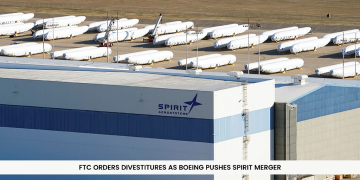What is 3D Printing in Manufacturing?
3D Printing technology is an additive technology used to manufacture parts or physical objects from digital files. It works by adding molten plastic layer upon layer to develop a complete product. Originally called ‘rapid prototyping,’ 3D printing technology was discovered back in the 80s. But after many years, the use and working of this technology have brought diverse changes in the manufacturing industry. It has several applications in the field of manufacturing, engineering, healthcare, and design.
Working of 3D Printing Tech
3D printing tech is specially designed to create three-dimensional solid objects from a digital file. 3D printers use Computer Aided Design Software(CAD) to create prototypes of realistic 3D objects, which are used in several industries. These 3D printers are available in different shapes and sizes according to construction models in the industries. Layer upon layer of molten plastic or powder creates a three-dimensional physical object with the help of a digital file. The resilience, accuracy, and rapidity of 3D printers make them accessible and useful tools for the future.
Pros of 3D Printing Technology
- Rapidity in manufacturing and prototyping
With the help of 3D designing and printing, the manufacturing of construction and housing parts becomes easy. The number of prototypes can be available in a short time to manufacturers with accuracy. The increased speed in designing prototypes and manufacturing 3D objects help the construction industry by generating minimum cost.
- Help to build 3D-printed Consumer Products
According to PWC, 64 percent of manufacturers expect that 3D printing tech will be used to make old and outmoded parts in the next 3-5 years. Most the consumer products like clothes, jewelry, and eye spectacles can be manufactured using 3D printing. Prosthetic legs and hands used in the healthcare industry are also manufactured with the help of 3D printing.
- 3D printing tech is affordable
3D printing is one of the most cost-effective technologies used in the manufacturing industry. Due to 3D printing, the entire manufacturing process speeds up which eventually reduces the production cost to a large extent. 3D printing is capable of constructing complex parts with the help of software programming and CAD. So, this has become an affordable alternative for many industries.
- Manufacturing by creating reduced waste
Generally, plastic and metals are used in 3D printers to manufacture three-dimensional objects. 3D printing is an additive type of technology that means specific material is needed to produce one part used by it. As a result, this reduces material cost-effectively in manufacturing.
- Fast production
3D printing is faster and more efficient than all other traditional manufacturing processes. It can print parts in a few hours, depending on the complexity and size of the object. 3D printers have large nozzles and bigger layer heights that help to print prototypes in minimum time. So manufacturers can easily design and check prototypes before their use.
Cons of 3D Printing Technology
- Inadequate availability of materials
Limited material use is problematic for manufacturers to produce a number of applications. 3D printing is most selective about the raw materials which are used during the manufacturing process of parts. Mainly two main raw materials used in 3D printing that are plastic and metals. There are also limitations while using them because not all metals and plastic materials are temperatures controlled enough for printing.
- Reduced employment opportunities
Automation in technology is a challenge in front of the employment generation in the world. 3D printing technology is an advanced process in manufacturing that leads to a reduction in the jobs of many workers in the construction industry. Undoubtedly, advanced technology assists us in wiping out human errors in the work, but it takes away the laborers’ jobs, which is not convincing either.
- Restrictions in the size building
3D printers presently have small size printing chambers, which are not enough for the production of large parts and tools in the manufacturing process. Anything larger has to be produced in separate parts and joined or assembled after production. So, this extends the cost and time required to design larger parts in the industries.
- Post-processing
Post-processing involved in 3D printing generally deals with the number of assemblies of tasks that should be performed after the printing process to enhance the ability and quality of that product or part. The post-processing method is not only limited to larger printing parts but also all other 3D objects. Many 3D parts go through water jetting, surface cleaning, chemical soaking, rinsing, drying, and all the other processes. So, this post-processing assembly in printing and designing three-dimensional parts is one of the drawbacks for the manufacturing industry.
- Not an eco-friendly process
3D printing commonly uses plastic and hazardous metals as raw materials for the production of 3D parts, but it may cause danger to the environment. Another setback is that many researchers reveal that the 3D printing technique uses a larger amount of energy than any other drilling machine used in industries.
Conclusion
Technology always assists humans in transforming their lives simpler, but people generally ignore problems that arise due to technology. 3D printing is no doubt useful technology in many sectors like healthcare, manufacturing, and aerospace to design three-dimensional objects in minimum time with affordable prices. Still, there is a requirement for more technological improvements to make it safe, easy to use, and environmentally friendly.






